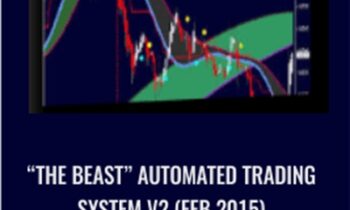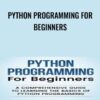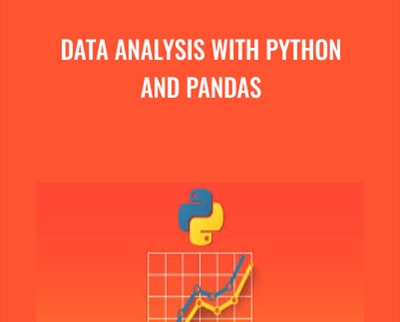-
×
 $100K Academy – Charlie Brandt
2 × $63.00
$100K Academy – Charlie Brandt
2 × $63.00 -
×
 ‘The Iceman’ 10-Week Video Course – Wim Hof Method
2 × $35.00
‘The Iceman’ 10-Week Video Course – Wim Hof Method
2 × $35.00 -
×
 6 Weeks Of Email Income Experts - Jason Capital
5 × $152.00
6 Weeks Of Email Income Experts - Jason Capital
5 × $152.00 -
×
 Disordered Eating Behaviors: Identify and Treat the Underlying Trauma - Lori Kucharski
1 × $85.00
Disordered Eating Behaviors: Identify and Treat the Underlying Trauma - Lori Kucharski
1 × $85.00 -
×
 All Things Cardiac: Evidence-Based Approaches to Manage Any Situation - Cyndi Zarbano
1 × $85.00
All Things Cardiac: Evidence-Based Approaches to Manage Any Situation - Cyndi Zarbano
1 × $85.00 -
×
 “The Beast” Automated Trading System V2 (Feb 2015)
3 × $36.00
“The Beast” Automated Trading System V2 (Feb 2015)
3 × $36.00 -
×
 $300 a day YouTube Affiliate Marketing Blueprint - Hunter Edwards
2 × $43.00
$300 a day YouTube Affiliate Marketing Blueprint - Hunter Edwards
2 × $43.00 -
×
 101: Access Your Psych Capital - The ReThink Group
1 × $90.00
101: Access Your Psych Capital - The ReThink Group
1 × $90.00 -
×
 Managing Patient Emergencies: Critical Care Skills Every Nurse Must Know - Dr. Paul Langlois
1 × $85.00
Managing Patient Emergencies: Critical Care Skills Every Nurse Must Know - Dr. Paul Langlois
1 × $85.00 -
×
 Think and Grow Rich - Napoleon Hill
1 × $23.00
Think and Grow Rich - Napoleon Hill
1 × $23.00 -
×
 Managing Geriatric Behaviors: Wandering, Aggression, Malnutrition and More - Steven Atkinson
1 × $35.00
Managing Geriatric Behaviors: Wandering, Aggression, Malnutrition and More - Steven Atkinson
1 × $35.00 -
×
 Medical Marketing Mastery 100k Local Marketing Business - Jeff Smith
1 × $72.00
Medical Marketing Mastery 100k Local Marketing Business - Jeff Smith
1 × $72.00 -
×
 Integrated Chronic Pain Management: Mental Health Interventions that Counteract Opiate Addiction - Robert Umlauf
1 × $85.00
Integrated Chronic Pain Management: Mental Health Interventions that Counteract Opiate Addiction - Robert Umlauf
1 × $85.00 -
×
 Improving Diabetes Management: Tools for the Nurse - Nancy Moline
1 × $85.00
Improving Diabetes Management: Tools for the Nurse - Nancy Moline
1 × $85.00 -
×
 Albert Aiello – LLC’s To Protect Business Owners
2 × $82.00
Albert Aiello – LLC’s To Protect Business Owners
2 × $82.00 -
×
 Rachel Rodger - Small Business Bodyguard
1 × $43.00
Rachel Rodger - Small Business Bodyguard
1 × $43.00
You may be interested in…
-
Add
 Living the Legacy - Bob Proctor
Living the Legacy - Bob Proctor
$1,995.00Original price was: $1,995.00.$250.00Current price is: $250.00. -
Add
 Make 'Em Laugh & Take Their Money - Dan Kennedy
Make 'Em Laugh & Take Their Money - Dan Kennedy
$500.00Original price was: $500.00.$17.00Current price is: $17.00.

 ‘The Iceman’ 10-Week Video Course – Wim Hof Method
‘The Iceman’ 10-Week Video Course – Wim Hof Method  6 Weeks Of Email Income Experts - Jason Capital
6 Weeks Of Email Income Experts - Jason Capital  “The Beast” Automated Trading System V2 (Feb 2015)
“The Beast” Automated Trading System V2 (Feb 2015)  $300 a day YouTube Affiliate Marketing Blueprint - Hunter Edwards
$300 a day YouTube Affiliate Marketing Blueprint - Hunter Edwards  Think and Grow Rich - Napoleon Hill
Think and Grow Rich - Napoleon Hill  Rachel Rodger - Small Business Bodyguard
Rachel Rodger - Small Business Bodyguard 



 Purchase this course you will earn
Purchase this course you will earn